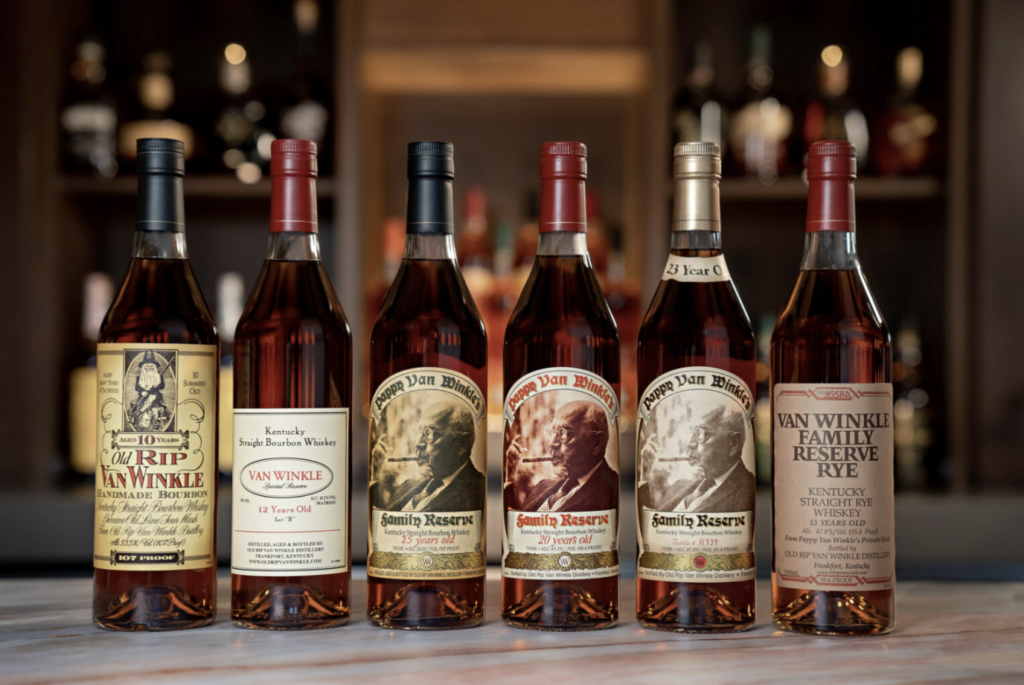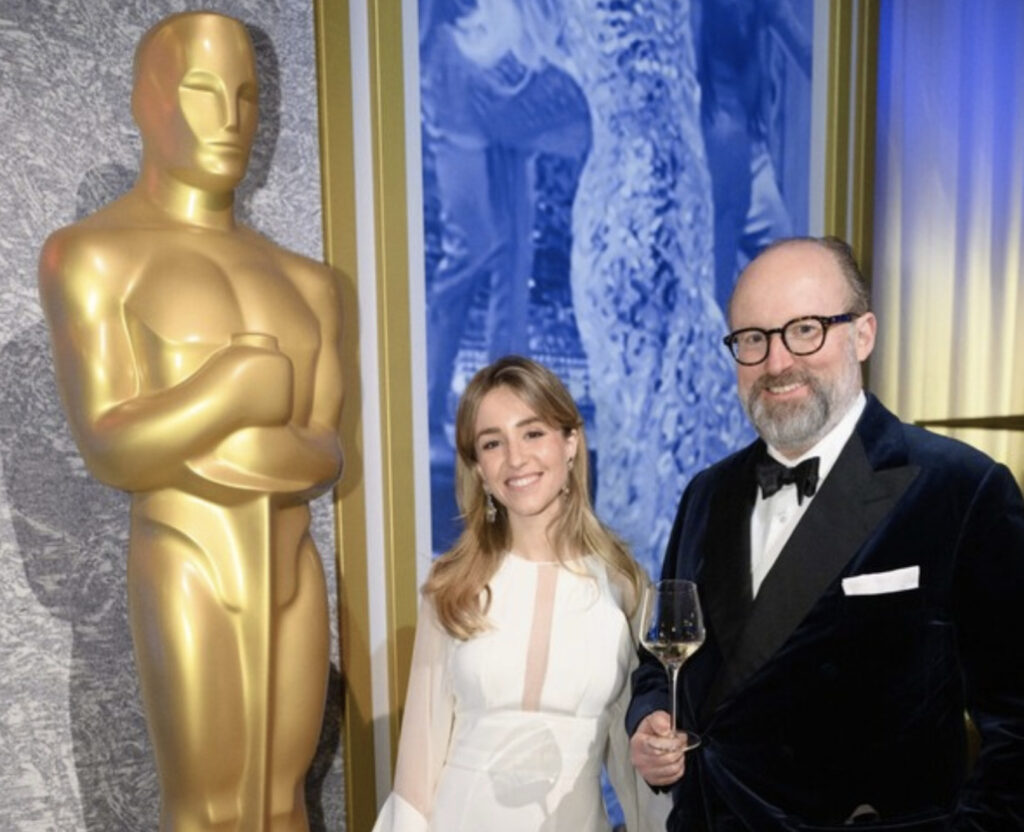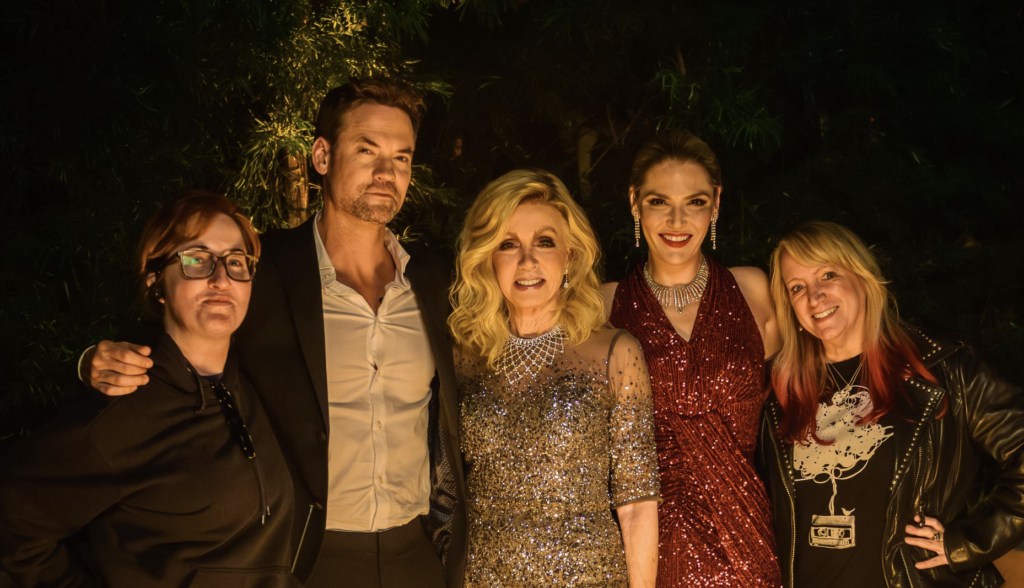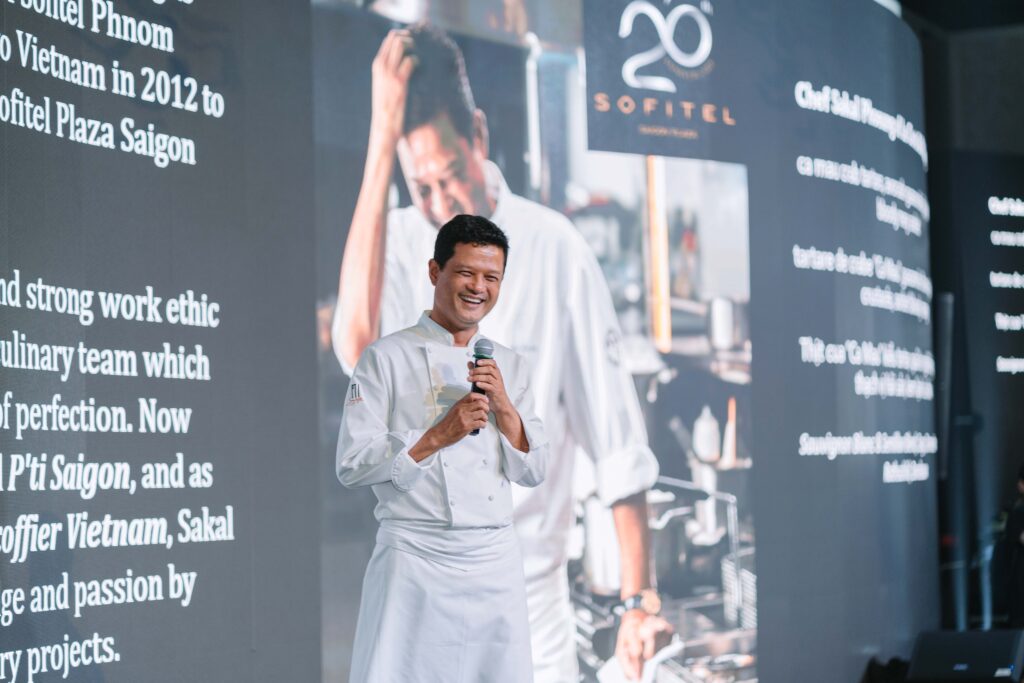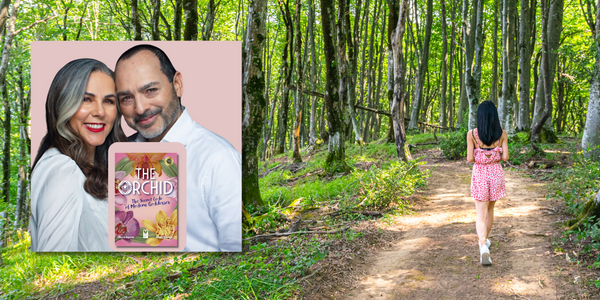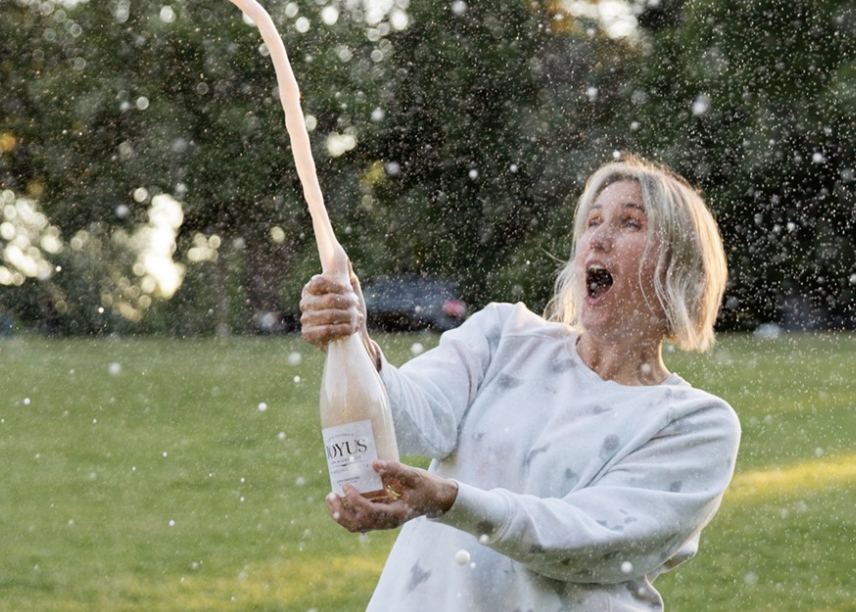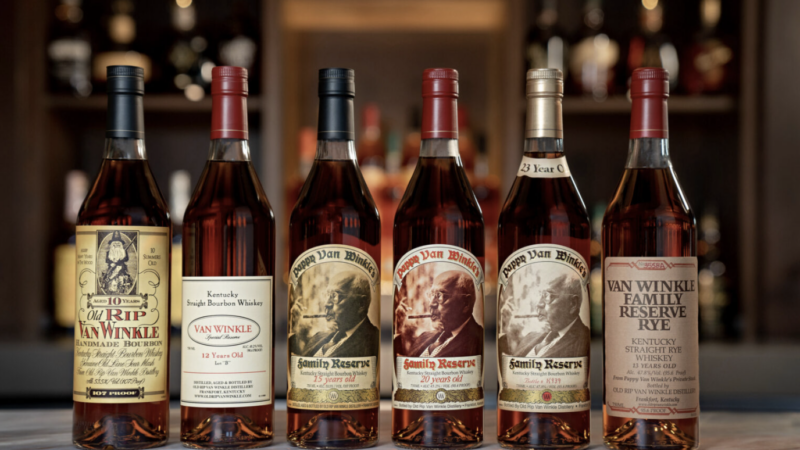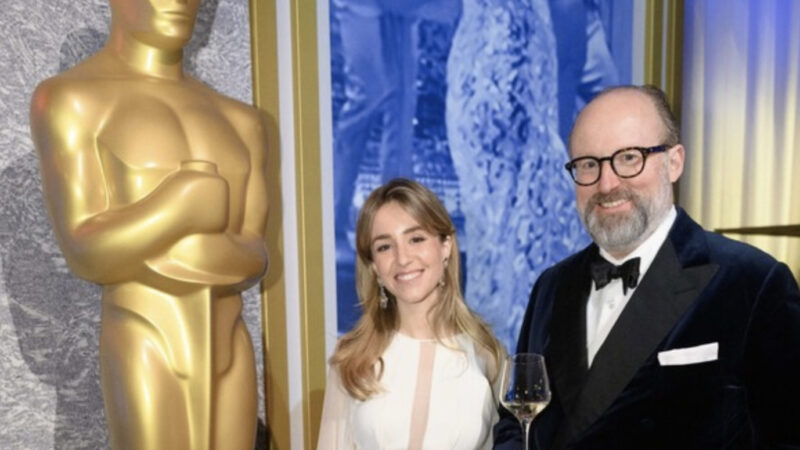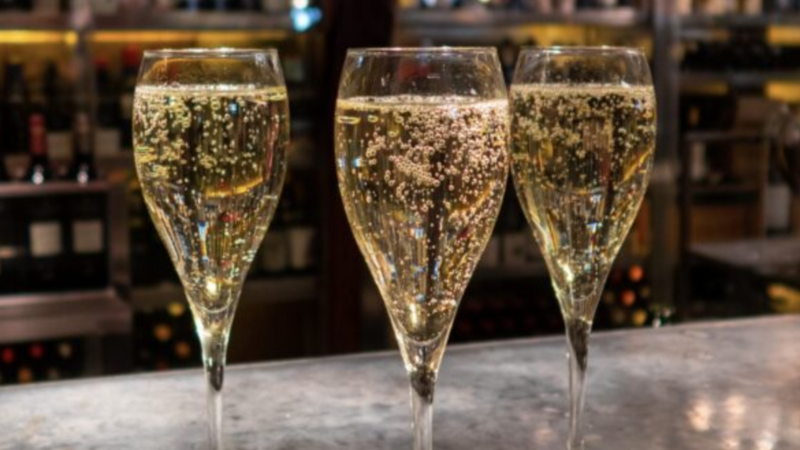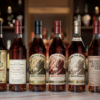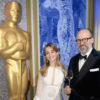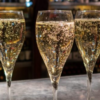Dominique Crenn, the Chef Behind movie “The Menu” on a global foodie adventure.
Chef Dominique Crenn, the first and only female chef in North America with three Michelin stars, helped the filmmakers of the horror movie “The Menu” bring to life the perfect menu for the main event which has been described as a real 9-courses culinary and artist masterpiece.
And now there is an opportunity for an intimate group of guests to meet, dine and discover with Dominique in person in France

Dominique Crenn, the Chef Behind movie “The Menu” on a global foodie adventure.
Enjoy Dominique Crenn for 5 days in France for a Hosted Experience with Satopia Travel
As the chief technical consultant for The Menu film, Dominique Crenn was responsible for advising on all aspects of food preparation and presentation to bring to life the concepts of the menu based on Seth Reiss and Will Tracy’s screenplay.
Crenn is known for her creative approach to cooking
She has been working closely with Mark Mylod, the director and producers to ensure that the film accurately portrays the culinary world.
Her menu is inspired by her travels and experiences around the world
Crenn is known for her creative approach to cooking, and her menu is often inspired by her travels and experiences around the world. Dishes that Dominique Crenn designed as a consultant are presented with the slow-motion pomp and string accompaniment of a “Chef’s Table” episode. Indeed, the food-worshiping Netflix series, which featured Crenn in season two, was an inspiration for “The Menu”.
There is an incredible opportunity for an intimate group of like-minded travelers
There is an incredible opportunity for an intimate group of like-minded travelers to meet chef, icon and activist Dominique Crenn.
In collaboration with Satopia Travel, Crenn conjures up five magical days and evenings where creativity and nature converge. Our most inspired Hosted Experience is a wonder to behold for our guests. Combining the magnificent culinary delights of triple Michelin star chef Dominique Crenn with the stunning backdrop of an ancient French chateau is certain to ignite your palette and spirit.
Dominique Crenn brings her soul to the feast
Dominique Crenn brings her soul to the feast, transforming ingredients through the poetry of gastronomy. Those fortunate to share her table and her stories will discover a world of passion and gratitude for food, community and life. You’ll create and share unforgettable memories.
Ancient olive groves, crisp French linen, the vintages of Cognac and the sound of boisterous laughter under a starlit sky. Step into a magical world of natural beauty, wonder and awe.
Booking is now open. Book before the 1st of January to take advantage of the holiday rates before prices increase.
About Satopia Travel
Satopia Travel (www.satopiatravel.com) specializes in unique experiences, led by world-class hosts. Providing guests with unprecedented access to some of the most extraordinary people on the planet, Satopia hosts world-class leaders who champion the potential for the future of humanity, creating meaningful connections through shared experiences. Every hosted experience has an element of giving back, either to a local community, social or environmental cause close to their heart.
Website http://satopiatravel.com
Instagram www.instagram.com/satopiatravel
YOU MIGHT ALSO LIKE
DC, Taste Ultra Rare Bourbon: Pappy Van Winkle, Eagle Rare featured in Fundraiser from Sazerac Company
Pappy Van Winkle, Eagle Rare featured in Ultra Rare Bourbon Tasting California Wildfire Relief Fundraiser from Sazerac Company
Sazerac Company will host a first of its kind fundraiser in support of California wildfire relief efforts, offering consumers the chance to purchase three ultra-rare prize packages featuring some of Buffalo Trace Distillery’s most sought-after bourbons.
Pappy Van Winkle Might be the Holy Grail of Whiskey
Pappy Van Winkle is the crown jewel of the bourbon world, celebrated for its unparalleled smoothness, depth of flavor, and rarity. Produced by the Old Rip Van Winkle Distillery, this small-batch bourbon is aged for 15 to 23 years, resulting in a rich, complex profile with notes of caramel, oak, and spice. Its popularity skyrocketed due to limited availability, with demand far outstripping supply, creating a cult following among collectors and connoisseurs. The combination of craftsmanship, rarity, and the mystique surrounding its release makes Pappy Van Winkle a true symbol of whiskey excellence.
Eagle Rare 25: The Pinnacle of Rare Bourbon
Eagle Rare 25, a highly sought-after release from Buffalo Trace Distillery, is one of the most revered bourbons in the world. Aged for a remarkable 25 years, this bourbon is celebrated for its exceptional depth, complexity, and rich flavor profile, featuring notes of dark fruit, toffee, leather, and oak. Its rarity—released in extremely limited quantities—has helped fuel its cult status among whiskey collectors. The longer maturation process adds unparalleled smoothness, with each bottle being an extraordinary expression of craftsmanship. As one of the finest offerings from Buffalo Trace, Eagle Rare 25 represents the ultimate pursuit of bourbon excellence.
Offerings include the first-ever single barrel of Pappy Van Winkle 15 Year Old, a complete set of the Pappy Van Winkle Bourbon Collection and a bottle of Eagle Rare 25 with 100% of proceeds benefitting World Central Kitchen and Another Round Another Rally charities

Eagle Rare 25
One hundred percent of funds raised through Sazerac’s California Wildfire Relief Fundraiser will go toward two non-profit organizations committed to ongoing relief efforts in the state: World Central Kitchen (WCK), which is working with restaurant and food truck partners in Southern California to provide meals to those in need; and Another Round Another Rally, which is collecting funds for real-time financial support for hospitality workers impacted by the wildfires.
“Our hearts break for those who have been impacted by the devastating wildfires that have swept across California this year,”
Jake Wenz
President and CEO of Sazerac
“The fires have caused immense destruction, and the toll on the Los Angeles community is profound. Through this program we hope, humbly, to offer a small bit of aid to World Central Kitchen and Another Round Another Rally as they continue their much-needed support of the California community during this difficult time.”
Offerings available through the Sazerac California Wildfire Relief Fundraiser include:
1. Auction*: the first-ever single barrel of Pappy Van Winkle 15 Year Old will be available for auction as part of the initiative
- This is the first single barrel of Pappy Van Winkle to ever be made available for purchase. The barrel was specially selected from the heart of the aging warehouses at Buffalo Trace Distillery for this auction. On average, a single barrel yields approximately 125 bottles of bourbon.
- Funds raised via auction will be evenly split between WCK and Another Round Another Rally
2. Sweepstakes 1**: a complete bottle set of the Pappy Van Winkle Bourbon Collection
- The very rare, limited-edition Pappy Van Winkle Bourbon Collection features six unique bourbons, each reflective of a craft that blends generational knowledge dating back to the late 1800s. This highly coveted collection features Old Rip Van Winkle 10 Year, Pappy Van Winkle 12 Year, Pappy Van Winkle Family Reserve Rye 13 Year, Pappy Van Winkle 15 Year, Pappy Van Winkle 20 Year, and Pappy Van Winkle 23 Year.
- Funds raised by the Pappy Van Winkle Bourbon Collection sweepstakes will benefit WCK
3. Sweepstakes 2**: one bottle of Buffalo Trace Distillery’s ultra-rare Eagle Rare 25
- At 25 years old, Eagle Rare 25 marks the oldest expression ever released from the Eagle Rare portfolio and defies existing perception of ultra-aged bourbon with its smooth, complex flavor profile. Eagle Rare 25 is the first bourbon aged in Warehouse P, a purpose-built, state-of-the-art warehouse, constructed to test if it was possible to extend favorably both the aging and maturation processes typical for American whiskey and bourbon.
- Funds raised by the Eagle Rare 25 sweepstakes will benefit Another Round Another Rally
In early January, wildfires broke out in the Palisades and Eaton communities of Los Angeles and quickly spread to neighboring communities. It is estimated more than 50,000 acres have burned, with the wildfires destroying more than 16,000 structures and killing at least 28 people. From the beginning, both WCK and ARAR have been on the frontlines in Los Angeles helping the communities hardest hit.
- WCK’s Relief Team mobilized immediately in Southern California to support first responders and families impacted by the wildfires. In collaboration with 80+ restaurant and food truck partners, WCK is distributing free hot meals to those in need at several locations throughout Southern California. Since the wildfires began in early January, WCK has served more than 600,000 meals to those affected by the wildfires.
- As the fire’s devastation began to overtake Los Angeles and surrounding areas, Another Round Another Rally jumped into action immediately knowing bar and restaurant workers would face an uphill battle with regard to loss of businesses and loss of income opportunities. Their Disaster Relief Fund enables the organization to provide real-time financial support to hospitality workers impacted by California’s wildfires. In the month since the fires started, Another Round Another Rally has given out over $100k in financial assistance to bar and restaurant workers affected by the disaster.
Those looking to support the Sazerac California Wildfire Relief Fundraiser can participate in multiple ways:
- For the Pappy Van Winkle 15 Year Old single barrel auction, bidding will begin at $10,000 and those interested can bid as many times as they wish. Bidding will increase in increments of $1,000. The winner of the auction will receive a monetary prize equal to the value of the lot, which may be used to purchase the bottles yielded from the barrel, as well as the empty barrel.
- Link to bid: www.sazeracgivesback.com
- For both the Pappy Van Winkle Collection and Eagle Rare 25 sweepstakes, entrants will receive one entry for every $50 donation made through the registration site. There is no cap on the amount a person can donate. The winners of each sweepstakes will receive a monetary prize equal to the value of the bottle they won, which may be used to purchase the bottles.
- Link to donate and enter: www.sazeracgivesback.com
The Sazerac California Wildfire Relief Fundraiser begins on Tuesday, February 11 at 12pm noon EST. To enter and make a donation, and to view the full official rules, visit www.sazeracgivesback.com. All entries must be received by 11:59PM EST on Sunday, February 23. One winner for each prize package will be randomly drawn and notified via phone and email the week of March 3.
About Sazerac Company
With over 400 years of history, Sazerac is one of the world’s largest distilled spirits companies. Now in the fourth generation of the current family ownership, Sazerac strives each day to bring the finest spirits to consumers around the world.
Over 500 of the world’s most extraordinary brands are part of the Sazerac portfolio, including Buffalo Trace Bourbon, Eagle Rare, Weller, The Last Drop Distillers, Fireball Cinnamon Whisky, Southern Comfort, Wheatley Vodka, Meyers’s Rum, White X Cognac, Sazerac de Forge Cognac, Paddy’s Irish Whiskey, and many more.
Sazerac is also the steward of many fine distilleries internationally, including Buffalo Trace Distillery in Kentucky, United States; Domaine Sazerac de Segonzac in Cognac, France; Paul John Distillery in Goa, India; and Lough Gill Distillery in County Sligo, Ireland. Additional impressive locations can be found in New Orleans, Montréal, London, Cork and Sydney, to name a few.
To learn more visit www.sazerac.com.
DC, Who does wine better: Politics or Hollywood? Clarendelle , Domaine Clarence Dillon Return as Official Wine Partner of 97th Oscars
DC, Who does wine better: Politics or Hollywood? Clarendelle & Domaine Clarence Dillon Return as Official Wine Partner of 97th Oscars
Clarendelle & Domaine Clarence Dillon Return as Official Wine Partner of the Academy of Motion Picture Arts and Sciences, Academy Museum of Motion Pictures and Exclusive Wines Poured at the 97th Oscars Ceremony
Clarendelle and the family company Domaine Clarence Dillon announce the brand’s return as the official wine partner of the Academy of Motion Picture Arts and Sciences and the Academy Museum of Motion Pictures.
Wine for the Academy
The Academy Awards, renowned for their glamour and celebration of cinematic excellence, also feature a notable emphasis on fine wines during their events. A substantial amount of wine is served to accommodate the numerous attendees. For instance, during the 90th Academy Awards, over 2,400 bottles of wine were provided, equating to approximately 14,000 glasses.
Annually, the Academy hosts several official events where wine is prominently featured. The most notable of these is the Governors Ball, the official post-ceremony celebration, where distinguished wines and champagnes are served to winners, nominees, and guests. In addition to the main ceremony and the Governors Ball, there are various pre-show receptions and ancillary gatherings throughout the awards season, each offering curated wine selections to complement the festivities.
These events underscore the Academy’s commitment to providing a luxurious and celebratory atmosphere, with fine wines playing a central role in the experience.
For the third consecutive year, the prestigious family-owned wine company will exclusively pour exceptional red and white wines at the 97th Oscars® ceremony.
This partnership bridges the world of fine wine and film, elevating the Oscars experience for Hollywood’s biggest stars.
In addition to delighting guests at the Dolby® Theatre at Ovation Hollywood, Clarendelle and Domaine Clarence Dillon wines will be served at the iconic Governors Ball after the Oscars ceremony and the Official Oscars® Watch Party at the Academy Museum of Motion Pictures. This year, Governors Ball attendees can enjoy a glass of our elegant and contemporary wines while winners have their Oscar® statuettes engraved. The wines will also be perfectly complemented with a legendary gastronomic menu crafted by Wolfgang Puck Catering for an unforgettable evening.
“Before joining the family business, I began my career as a screenwriter, so to have the opportunity to partner with the Oscars for the third consecutive year is truly an honor,” said President and CEO of Domaine Clarence Dillon, Prince Robert of Luxembourg. “This collaboration is a natural extension of my family’s longstanding commitment and deep connection to film and the arts.”
Domaine Clarence Dillon will introduce two new wines for the star-studded events:
- La Clarté de Haut-Brion 2021: A sought-after white wine of rare delicacy with only 1,000 cases produced annually, La Clarté brings together the qualities of a fine white Bordeaux wine with fresh citrus and white flower aromas, followed by a crisp and refreshing finish of lemony brightness.
- Le Clarence de Haut-Brion 2015: Château Haut-Brion became the first Bordeaux vineyard to be named after its terroir, making the estate the first luxury brand in the world. The exquisite red Le Clarence de Haut-Brion 2015 is similar in style and elegance to its elder and encompasses all unique attributes of a fine wine with an attractive profile – smooth yet powerful, tasty and full-bodied, with notes of ripe fruit leaving an impression of freshness and volume, without heaviness.
Among the returning wine favorites are:
- Clarendelle Bordeaux White 2023: A refined and elegant wine, offering bright citrus notes of lemon and grapefruit, balanced by the smooth sweetness of pear and lychee.
- Clarendelle Bordeaux Red 2016: A wine with fruity aromas of red fruit and blackcurrant alongside floral overtones balanced by great tannic power and delicious velvety texture.
- Clarendelle Amberwine 2021: A complex, well-concentrated and modern sweet wine distinguished by its freshness and harmonious balance of floral fruit and acidity with a smooth finish.
Founded in 1935, Domaine Clarence Dillon is a family-owned group renowned for its prestigious Bordeaux estates, including Château Haut-Brion, Château La Mission Haut-Brion, and Château Quintus. Under the leadership of Prince Robert of Luxembourg, the company has earned a global reputation for excellence in winemaking, joining Primum Familiae Vini, an international association of some of the world’s finest wine producing families. Domaine Clarence Dillon has long been a supporter of the arts, with Prince Robert’s background and screenwriting playing an essential role in merging the worlds of wine and cinema by bringing Clarendelle and Domaine Clarence Dillon to the biggest night in Hollywood.
For more information, follow on Instagram @clarendelle @chateauhautbrion_ @chateaulamissionhautbrion @chateauquintus @leclarenceparis.
DC’s Apéro, Napa’s Be Bubbly, NYC’s Coqodaq: Top 10 Bars and Restaurants for Champagne from Bureau du Champagne
Napa’s Be Bubbly, NYC’s Coqodaq, DC’s Apéro: Top 10 Bars and Restaurants for Champagne from Bureau du Champagne
From Napa to DC to Manhattan and just 7 other sparkling stops!
Bureau du Champagne, USA today announced its annual list of the Top 10 Bars and Restaurants where Champagne plays a starring role. The list, now in its third year, recognizes establishments that elevate and celebrate the uniqueness of the sparkling wine that comes only from Champagne, France.
Released in advance of Champagne Day 2024, the list showcases Champagne standouts in every U.S. region. It recognizes restaurants and bars that take special care to offer Champagnes from a wide variety of producers, list them properly on their menus, and serve them with élan.
“We received nominations for spectacular bars and restaurants across the country, and selected from them a list of destinations that embody the spirit of Champagne,”
Lori Russo
Director,
the Bureau du Champagne, USA.
“While these restaurants and bars differ in style, spanning the spectrum from fine dining to fried chicken, they all have one thing in common: they understand what makes Champagne special. For that, we couldn’t be prouder to raise a glass to them on Champagne Day and the rest of the year.”
The full list of this year’s featured bars and restaurants can be found below in alphabetical order:
- Apéro, Washington, DC: Apéro’s list of more than 700 wines places special emphasis on Champagne. The intimate setting in DC’s popular Georgetown neighborhood is an ideal spot to explore an extensive list of Champagnes smartly organized by style.
- Be Bubbly, Napa, Calif.: In the heart of California wine country, Be Bubbly takes care to showcase Champagne with a menu that includes a map of the region’s five wine-producing districts and a philosophy of Champagne as a celebration of life.
- Boiler Room, Omaha: The wine list at this terroir-focused restaurant, originally conceived by a Master Sommelier, offers a broad range of Champagnes at varying price points so everyone can join in the celebration.
- Charleston, Baltimore: The wine program at Charleston emphasizes the special relationship between wine and food. The Champagne list, which spans three pages of its menu, explains the magic of Champagne along with a diversity of tasting profiles.
- Coqodaq, New York: Proving the versatility of Champagne, Coqodaq pairs the sparkling wine with both caviar and its signature bucket of Korean fried chicken.
- Coupes, Dallas: Coupes bills itself as a bar for Champagne. True to its name, its vast menu of Champagnes explains that “Champagne is a sparkling wine, but not all sparkling wines are Champagne.”
- Fizz Champagne & Bubbles Bar, Sacramento, Calif.: Fizz believes in celebrating everyday triumphs with Champagne. Its menus and events elevate Champagne from France and distinguish it from other sparkling wines.
- La Vie, Waikiki, Hawaii: La Vie’s emphasizes farm-to-table dining with French flair, so its large selection of vintage and non-vintage Champagnes creates the perfect complement, and the view is special, too.
- Pops for Champagne, Chicago: Known for its special events, tastings, Champagne education and a vast list of Champagnes of every style, Pops has been dazzling Chicago with Champagne since 1982.
- Sexy Fish, Miami: The extraordinary interior of this Brickell restaurant is matched only by its extensive list of Champagnes both accessible and rare.
For more information on Champagne Day or to find an event near you, visit champagneday.champagne.fr. More events will be added in the near future, so check back often.
Bureau du Champagne, USA, is the official U.S. representative of the Comité Interprofessionnel du Vin de Champagne (CIVC), a trade association representing the houses and winegrowers of Champagne, France. The Bureau works to advance the CIVC’s mission of defending the interests of the Champagne appellation worldwide through education and advocacy. For more information, visit us online at www.champagne.us.
About the Author
Joe Wehinger (nicknamed Joe Winger) has written for over 20 years about the business of lifestyle and entertainment. Joe is an entertainment producer, media entrepreneur, public speaker, and C-level consultant who owns businesses in entertainment, lifestyle, tourism and publishing. He is an award-winning filmmaker, published author, member of the Directors Guild of America, International Food Travel Wine Authors Association, WSET Level 2 Wine student, WSET Level 2 Cocktail student, member of the LA Wine Writers. Email to: Joe@FlavRReport.comYou Might also like
-
Bubbly East Coast Prosecco Tasting! Discover with Wine Expert Alan Tardi Wed June 26th at New York Wine Studio
DC Heads to NYC for Prosecco! Taste and Discover with Wine Expert Alan Tardi Wed June 26th at New York Wine Studio
Prosecco has gone from a little known mountain fizz to a vinous superhero, overtaking Champagne (and every other sparkling wine out there) and enjoyed by wine drinkers throughout the world, as the base of a cocktail or an everyday quaff.

But despite its huge popularity, most people don’t know much about it.
And there is much more to Prosecco than many people are aware.
”My objective is to
clarify the critical differences
between the original ancient Conegliano Valdobbiadene Prosecco and
the DOC Prosecco that was enacted in 2010.”
Alan Tardi
New York Wine Studio
Prosecco is produced only in Italy, in the Northern regions of Veneto and Friuli, and there are three official Prosecco appellations.

Prosecco DOC
One of them, Prosecco DOC, was created in 2010. It occupies a huge, mostly flat area encompassing almost two entire regions and accounts for most of the 700+ million bottles of Prosecco produced each year.
Conegliano Valdobbiadene Prosecco DOCG
Conegliano Valdobbiadene Prosecco DOCG is a tiny area in the foothills of the Dolomites consisting of 15 small municipalities in the province of Treviso. This is the ancient winegrowing area where Prosecco was born and made a miraculous comeback in the aftermath of World War II.

New York Wine Studio’s Alan Tardi
Besides its pedigree, there are numerous factors of the Conegliano Valdobbiadene enclave that distinguish it from any other winegrowing area in the world: complex and diverse topography, variety of soils, native grape varieties, distinct sub-areas, ancient history, and varied typology—bubbly, fizzy, and still; secondary fermentation in tank or in bottle, leaving sediment in the bottle (known as Ancestral Method) or removing it (Traditional Method).

In this class—which takes place right in the middle of National Prosecco DOC week—we will discuss the origin and evolution of Prosecco in the Conegliano Valdobbiadene area. We will also examine the two additional Prosecco appellations created in 2010.
But most of the time will be devoted to exploring and tasting Conegliano Valdobbiadene Prosecco through a lineup of 8 exceptional terroir-driven wines, in a variety of styles, that demonstrate the unique characteristics, complexity, and diversity of the original Prosecco.
Participants will also learn how to say “CONEGLIANO VALDOBBIADENE” like an Italian!

Alan Tardi has arranged a fantastic lineup of unusual and exceptional wines (half of them are coming directly from Italy) which demonstrate the various factors that characterize the complexity and uniqueness of Conegliano Valdobbiadene: Different production methods (“Tranquillo” i.e. still, Martinotti, Classico/Traditional, Ancestral); frizzante, spumante; single vineyards, Rive, native grape varieties; diverse, soils, terroirs and topographies.
List of Wines
- Prosecco Tranquillo DOCG “Il Canto Antico” — BORTOLOMIOL*
- Colli Trevigiani IGT Verdiso Frizzante Sui Lieviti — GREGOLETTO
- Progetto 5 Varietà Conegliano Valdobbiadene DOCG Brut — MARCHIORI*
- Conegliano Prosecco Superiore DOCG Rive di Ogliano Extra-Brut — BIANCAVIGNA
- Superiore di Cartizze Brut DOCG — RUGGERI*
- Superiore di Cartizze DOCG “Private” Rifermentato in Bottiglia 2014 — BISOL
- Conegliano Valdobbiadene Prosecco Superiore DOCG Rive di Carpesica “S.C. 1931” Metodo Classico — BELLENDA*
- Valdobbiadene Prosecco Superiore DOCG Asciutto, Rive di Colbertarldo, Vigneto Giardino — ADAMI
- Torchiato di Fregona Colli di Conegliano DOCG “Ciàcoe” 2016 — CA’ DI RAJO*
*Shipped directly from the winery in Italy
Find more information and buy tickets at New York Wine Studio or at the link below.
https://www.newyorkwinestudio.com/original-prosecco
Post Views: 578 -
Planet-Based food? You heard right. Find out more from Chris Langwallner and WhatIf Foods
Planet-Based food? You heard right. Find out more from Chris Langwallner and WhatIf Foods.
WhatIF Foods believes in a better better.
Tasty, delicious foods that are better for our bodies, better for our taste buds and farmer buds alike. Better for degraded lands, our eco-systems and naturally… better for cows.

Today I had the chance to have a conversation (via zoom) with WhatIF Food’s Chris Langwallner to talk about inspiration, their foods, their flavors and the science and technology making it all happen.
This conversation has been edited for length and clarity. For the full conversation visit our YouTube channel.
Today we are here with Chris Langwallner from What If Foods. Thanks for joining us today.
Absolute pleasure. I cannot thank you enough. It’s fantastic to be here and letting our story get out a little bit. So thank you very much. I’m excited because it’s gonna be a lot of fun.
We’re talking about plant-based foods, we’re talking about planet based foods and for a “better-better” world. I’m hoping you’ll clarify that for us.
I look forward to it. Yes, it’s all about a planet based food company. It’s all about regenerating. It’s all about reconnecting to communities, restoring the greater land, and making sure that we are replenishing the nutrients we need on a day-to-day basis.
What inspired you to get into plant-based food?
To be honest with you, as a planet based company I think what really inspired me to get into a better way of doing things is actually a call out of my grandfather.

He has been always saying, leave this planet a better world than how you found it. When I was a young boy, I couldn’t understand. It was too abstract. I couldn’t really get my head around. But as I was then working in the industry for 20, 25 years you look behind the scenes, and you see how food is being manufactured on large scale and how profitability over shadows a lot of decision making.

And on the other flip side of the coin, there is a community out there, about 2.6 billion people. This planet makes a direct income or an indirect income from farming activities. And the vast majority, more than two thirds of these people are the poorest of the poor. And we are leaving them behind. And that’s not fair to them because what we have on the plates has been harvested by them.
They take care of their land. And if we leave them behind in the current state of affairs We’ll see many tears in their eyes. And it doesn’t have to be that way. It can be totally different. And hence my strife was really to look at the planetary health and its affairs as well as humanity overall.
And thinking about that must be a better way of doing things and how can we improve it, not incrementally, but really make a system change. And here we are basically inspired by my grandfather.
On your website, you take some very science-based heavy content and you make it fun and easy. Talk about that process.
It’s a team effort. Honestly, there’s a huge team behind the scenes that works tirelessly on improving our communication and our style and our tone. But the essence of it all is that we understand that Gen Zs and today’s youth are essentially those consumer groups that are on this planet.
Probably the first sort of generation that is fully educated in sustainability. And they have their ability today by one click of a button to really look behind the scenes and understand whether or not there is BS or whether or not there’s transparency, there’s honesty, and there is a different approach to things.

So that is one aspect of things. So we wanted to really make sure we are speaking to the youth on this planet. The second aspect of it all is that, You open your social media feeds today, or you open a media channel, you switch on your television and you are bombarded with bad news, after bad news.
And quite frankly, I have worked in universities and with students and I have been shocked by the fact that people, young guys, talk to me, ‘Hey, I don’t care about sustainability. I don’t care about our planet because it’s so crappy. Everything is so bad. I might as well just enjoy the time span I have on this planet.’

And I was shocked in contrast to what my grandfather told me. Today’s youth, some of them, not all, a fraction of them think like that. Or in other words I met this young girl and she says, I don’t know if I want to have children. Because I don’t know whether or not I would like to give birth to people that then inherit a planet that is so hot.
And all of that together was just making me restless and I wanted to really change things and and take this finite time span that I have on this planet to try as hard as I possibly can to leave it better than I found it. And that’s what I strive for. Hence we’re speaking with a fun and engaging voice.
We are speaking with colors and we are speaking with cartoons so that we basically get this heavy message across in an uplifting way and saying, Hey, you can be part of something. That actually does the opposite. It’s not grim. Yes. If we change, we can make this. We’re a better place and here we are.
Thanks for the call out. The credit goes to my team.
As we segue into the products themselves, what I wanna highlight is this BamNut Is that the nickname for the Bambara Groundnut?
Yeah, so we came up with Bamnut as a short version, as an acronym for the Bambara Ground Nut, which in reality is a legume, a legume that helps us fix nitrogen organically in soils that are essentially degraded and left behind by intensive agriculture.

The Bamnut word came about in Singapore. We actually did not quite know when we started using it. We didn’t quite know how the Americans would pronounce it. And then we found out, alright, it’s the Bamnut. So it all turned out to be so witty and entertaining and just perfect fit for a “better, better” to be honest.
Because that’s a main ingredient in all of your food. Let’s talk about what is a BamNut. Why is it magical and unique?
I was walking through the world of agro food over the past 20 years, and I’ve always been hugely concerned about the massive speed of land degradation, particularly on arid land.
And that’s getting accelerated because of climate change; and the weather is changing; and the rains and the monsoons are not hitting regularly anymore. So it becomes increasingly more difficult to plant, the planting season to make sure that you are having the seeds in the ground before the rains hit them and so on and so forth.

So it becomes really challenging for folks. So land turpitation has always been a huge concern of mine because another, on the flip side of that, we are losing about 25 soccer fields worth of arid land every minute, while at the very same minute, the same amount of primary forests have been cut down.
So if you compare and contrast these two figures, what it tells me is that in order to make way for the old food industry, we actually cut primary forest and we leave land behind. And that is the wrong thing to do. That is one aspect of things.
The other aspect of things is I had once the fantastic opportunity to have an interview with Dr. Roy Steiner of the Rockefeller Foundation. And he gave a casual shoutout and he said, nowhere in the world do we produce and consume enough legumes. And I was thinking, why does he say that? But then it’s quite obvious if you think it through, because we are depending so much on crops that the land that basically holds the crops is deprived from organic nitrogen fixing crops like the legumes, and in the absence of nitrogen being fixed through the legumes, we throw endless amounts of synthetic fertilizers on the ground in order to make up for it.

That’s an aspect of things that also worried me. But today the input costs have gone through the roof is it unravels all over the world and it has gotten more and more expensive to do so the degrading of land in one pocket, I was basically going through my work with that sort of lens.
Then there’s this whole water issue. We are big time irrigating crops, but what does that do? It just slows down the loss of water tables because the moment we take water out of the ground, the water tables are collapsing. I have numbers for that. I had a business in India a long time ago, and it used to be 30 meters, and today it’s probably 90 to 120 meters.
So water is basically a huge issue. There was another lens through which I looked at, and then I was at a conference in Jakarta, and I happened to run into a scientist. He said to me that he works on the Bambara groundnut. It’s a complete crop. I thought, “Oh, that’s interesting. So what does that mean?”

And I started to really explore that much more deeper. And a complete crop turns out to be essentially a crop that has all micronutrients in the sort of right balance that we need. On top of it, it has all nine essential amino acids that we need. It has rich fatty acids, quality fatty acids, as well as car complex carbohydrates. So fiber.
You remember the forgotten macronutrient fibers for our microbiomes? So I got really inspired. So I looked up the amino acid profile and I saw it is rich in plutonic acid or spartic acid. So these are very cool amino acids in terms of generating nice flavors. And off I was; I organized the first couple of five kilos and the trial started, and that’s years and years ago.
In the meantime, the Bambara groundnut actually taught us a few lessons because it’s a very hearty nut and it really takes an effort to make cool products outta it.
It’s called a complete product, is that correct?
A complete food. A complete crop or complete food crop.
Right now all of the products on your website are based from BamNut. I see Bam Nut milk. I see noodles with seasonings, and then there’s bundles and swag and all kinds of delicious things.
In the future, are we expanding that beyond or what’s the scope?
We would love to explore new categories as we build our business. There are so many occasions throughout the day where we can actually incorporate the bambara ground in exciting products, and we look forward to doing that.

Our focus right now is definitely our milk portfolio. It’s a wonderful product. I encourage everybody to have a little taste and Judge for yourself. We have a client in Los Angeles, a coffee roaster, who said ‘This is the closest thing to cow milk that I’ve ever seen in plant-based milk.’
We call it planet based milk. I have to say again, shout out to my team in the R&D side of things because they have established a wonderful product essentially with just three ingredients: that’s water, the bambara groundnut, not coconut oil. The rest is essentially technology behind the scenes that actually makes it foam nicely, very stable foam, small bubbles. So you can do latte art.
Our Airy [flavor] is essentially the one that I would use for a nice drink, like a shake.
In between there is the Every Day [flavor] that goes essentially into my cereal in the morning.
What are the flavors?
Today we are in the market with three different products.
The first one in a slightly black sort of packaging is the Barista. It has the richest mouthfeel. It is the creamiest. We have designed it to perform fantastic or be able to perform fantastic latte art. So it really goes into the cappuccino sort of an experience rather nicely.

I personally take it also for Boba tea. I might as well use the bambara groundnut and foam it up.
I have my little trick with the barista. I actually froth it in the frother and I put my espresso shot into the frother with the barista together. So I froth it together. But that is just me. I just like it that way.

Then we have the purple package, which is our Everyday. My wife uses it in baking. We do make cakes, like traditional Austria style, and we totally use only the Everyday [flavor] for that.
Friends of mine [pour] it into their cereals in the morning. It’s a little bit richer, earthy, nutty in character because we do tend to roast the nuts a little bit stronger in the process of making it.
Last but not least, we have our Airy [flavor], which is the lightest one of it all. It is the mint colored package. It is the one that people take into milkshakes and protein shakes.
Let’s move on to Noodles
We wanted to create technologies that help us regenerate what’s broken. And today a large portion of all ramen that is being consumed on a day-to-day basis globally is deep fried in palm oil. Palm oil leaves huge banks of land degraded behind, particularly after the third cycle of palm plantations being grown.
We see the aftermath of the palm plantation industry essentially now in Southeast Asia. Therefore we were alerted when we started this project to basically say no to frying and no to deep frying and no, to essentially dehydrating instant noodles or ramen using that sort of process.

So we invented a technology that actually took that sort of challenge away. We invented an industrial scale air frying technology. Once you actually don’t fry anymore, you save about 20% of the space because 20% of palm oil is [based] in the noodle product of classic ramen. That’s what it absorbs in the frying process.
So if you don’t deep fry, you save 20%. Now nutrients will survive. Now colors may survive. Then we replaced all the palm oil with the Bambara.
We started to actually say, how can we bring color and different flavors and textures on the plates of consumers? And we created these four different products with the four different colors, which is essentially the black one, which is charcoal driven, moringa is green, pumpkin is orange and the original is yellow.
So four different options, all the same philosophy.
The backbone of making it is the same, but then we add different nutrients to it to have fun, and then we add fancy seasonings to it, which makes just a nice flavor experience as well.
Our audience is passionate, hungry, curious, foodies. What does it actually taste like?
I’m extremely proud of our Noodles because even without the seasonings, you can cook them up and eat them and you will have a wonderful experience.
Try and contrast that with other ramen that you find in the market, and you will come back to our offering immediately because they’re just tasting nice.
So our starting point of then adding the seasonings to it, like hot and spicy, or the mushrooms is an easy undertaking. It is actually an easy sort of concept to work with because if you have a neutral and nice taste to start with from the noodle base, you can build interesting flavor profiles on top.
Rather than having to use heavy flavors to mask off-flavor from a product base, or not so nice processes or even crappy raw materials. We don’t have that challenge.
We also decided very early on to keep the salt at a minimum to stay away from any flavor enhancers. No MSG, we’ve tried to keep it as clean as we possibly can.
We’ve tried to use as much spice as we can access. No flavoring and stuff like that. I’ve been in that industry for over 20 years. We thought let’s stay honest, to the product as well, to the noodles as well. And that has been a fantastic journey.
Our “Original, is a hot and sweet, hot and spicy pairing. In Southeast Asia, it’s based on wok cooking. That’s my personal favorite. I eat it on salads with a little bit of a balsamico dressing
We have with Sesame Garlic, many kids who go for a green one.
Pumpkin with the traditional Indian curry offer a great pairing. Watch out, it comes hot and spicy. Typical Indian flavors.
Last but not least is our charcoal with mushrooms. It’s fantastic for, if you go out to have a beer and come home and wanna have a bite, go for it. It’s a good one.
How did you decide which flavors to choose? Was it a lot of trial and error?
There’s a lot of trial and error. There’s a lot of pairing up with our noodles.
What we have tried to do is really look into what are the best pairings for these sort of flavors.
From that point of view, we also wanted to stay with our seasonings. We wanted to stay essentially planet based. None of our ingredients have any animal derived products in it.
You look at the charcoal, you cook it up, you eat it, you give it to a chef, let him experiment around.
We had a Spanish chef take our charcoal and put it into a paella. All of a sudden there was a totally different sort of recipe.
The way we actually derived the final products has also a lot to do with people that actually use it day-to-day in the kitchen and learn from them.
What’s the future of WhatIf foods?
We are going to enter new categories of food and we are gonna expand our existing categories with new products.
But I probably would love to use the opportunity to take you along on a more philosophical sort of journey for WhatIf foods and what comes hopefully in the next couple of years to come, because I think we have a better opportunity that needs doubling down now.
What I’m talking about is really the cost of the way we are making everything right from originating bambara groundnut, with partnering farming communities in all parts of Ghana. Encouraging them, making the ingredients ourselves, and then making the food applications, making the food, and then basically taking it to retail all the way through to Manhattan and other parts of the US.

So it’s that entire regenerative value chain that we have created and what that actually represents to us is an opportunity to really explore the intersection between soil health and restoring the soil that has been once degraded from intensive agriculture.
It is that intersection of renewable energy because the Bambara groundnut now grows in a shell and hence the shell has energy in there and can be used in order to fire up essentially for power.
If you do that smartly, you generate biochar. With biochar, you then actually sequester carbon from the atmosphere into the soils permanently for hundreds, if not a thousand years to come.
And last but not least, another intersection is wellbeing for consumers. We call them “Better Believers” as well as farming communities because we work with them directly.
We are proud of the fact that we have increased profit, not income; profit of farmers who work with us by 300%.
At 2.5 acres, these farmers are permanently uplifted above the poverty line. That’s the intersection we really wanna double down to. Again, soil health, renewable energy, carbon sequestration.
Well-being for both the better believers as consumers, as well as the farming communities. Its possible and we’re looking forward to doing that on a large scale. If we wanna fulfill the demand that we hopefully can create, then we will probably need about 20,000 farmers to do that in the next five to ten years to come.
And then generate all the energy that we need internally to be there for carbon zero. Even further carbon or maybe even participate in the carbon market through certificates. That’s our next challenge. That’s where we wanna go.
Find more about What If Foods on their website
Follow WhatIf Foods on Tik Tok, Facebook, Twitter, LinkedIn
Post Views: 461 -
From A Wine Lover’s Bucket List: Eve Bushman spends a week touring and tasting in Chateauneuf du Pape
From A Wine Lover’s Bucket List: Eve Bushman spends a week touring and tasting in Chateauneuf du Pape
What’s on your Bucket List?
While a normal person wants to check off going to Mars, driving a racecar or meeting a president, wine writers have lists that almost always include visiting wineries in far off places. Having Shiraz in Australia, Tempranillo in Spain, Chianti Classico in Italy and Malbec in Argentina are on our lists, but top of the list for me has always been France. I had two days in Bordeaux years ago and a week in the Garda DOC in Italy that just wet my whistle for more, so when a small group of wine writers was being put together, to visit Chateauneuf du Pape for arguably the best Rhone wines in the world, I poised my pencil over my list and made a huge mark – YES, please, take me!
Quick travel tips: Bottles are priced much less at the source, even with shipping costs; we saved in buying a case to have sent home. If you can’t get winery appointments, or don’t have the time, we found several tasting rooms in town – as well as several places for meals. None of us in our party spoke fluent French, and though it would have helped, we were fine communicating in English. You can drive your own car, on the right side of the street, but there are many roundabouts, toll roads and narrow roadways.
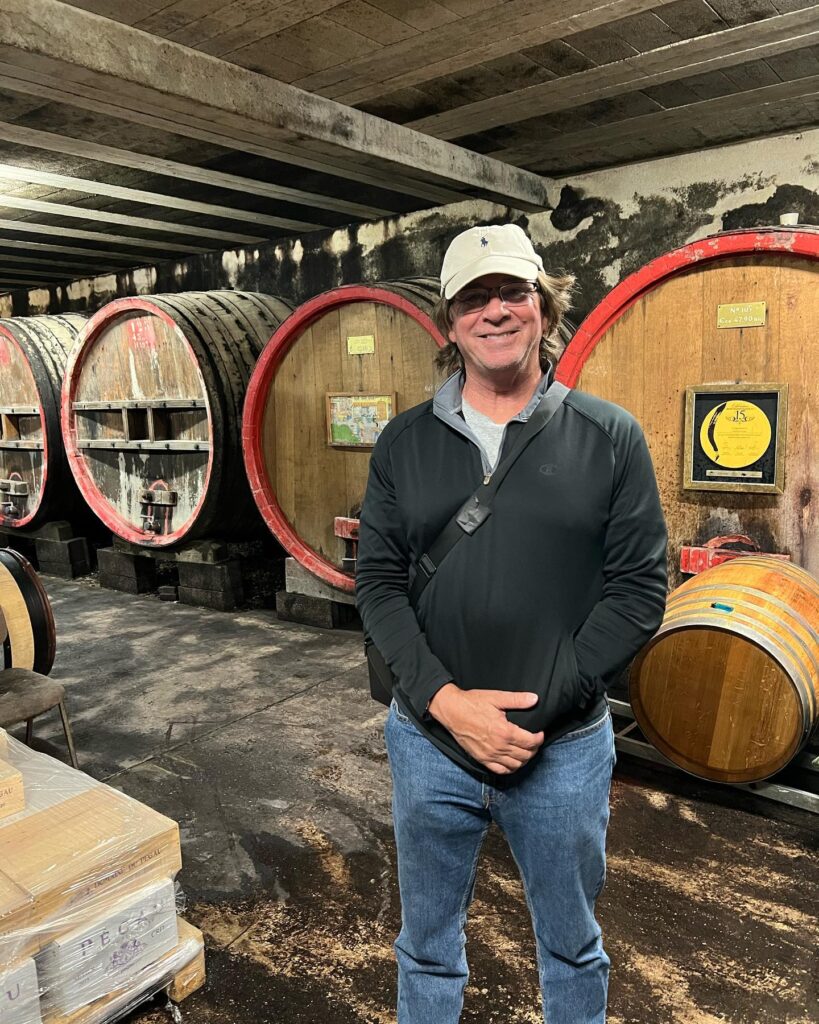
Eddie Bushman at Pegau
Domaine Pegau
Our first day in France began with a sunrise at our friend’s Villa in Monoblet. From there we traveled 90 minutes for a tour and tasting at Chateau (wines labeled from the Cote du Rhone area) and Domaine (Chateauneuf du Pape area in Rhone) from Pegau. We have a few Domaine Pegau wines in our cellar and really looked forward to visiting the real deal.
From our host we learned that there are five towns in Chateauneuf du Pape that produced 95% red and 5% white wine grapes. They use 13 grape varieties and any given bottle only has to use one grape. Pegau – properly pronounced as “Pay-Go” – uses all 13, including blending white with red grapes. For their Cote du Rhone property Pegau makes 44% red wine and one Rose wine.
We learned that they are an old school winery, as far as winemaking techniques. When finished wine is ordered only then is a bottling truck ordered and labels created. (There are different laws for different labeling around the world, so that is the reason they have to wait to print the labels.)
Only old oak is used for aging and some barrels are 90 years old. Stainless steel tanks are only used for their white wines; some high-end whites also spend time in wood barrels and concrete eggs. They do not de-stem any of the wines, which for me meant that the terroir would show earthiness and tannins.
Now, onto the tasting!
We sampled two Chateau Pegau Vallee du Rhone and two Domaine Pegau Chateauneuf du Pape, a white and red in each category, aged between 2019 and 2021. My personal preference on these leaned more toward the Chateauneuf du Pape wines and of particular note was the 2019 Cuvee Reservee that used all 13 Rhone grapes and 80% of that was Grenache. These wines were priced between 10 and 45 euros – which is pretty close to the same in American dollars.
Instagram: @Domaine_Du_Pegau
Website: https://pegau.com/

Roger Sabon Wine glass
Domaine Roger Sabon
Next up we visited Chateauneuf du Pape’s (CDP’s) Domaine Roger Sabon for a tasting.
Our host explained that this past summer they experienced drier weather producing smaller berries over 18 hectares. Sabon, like Pegau, has both a Domaine for the CDP wine area and a Cotes du Rhone label. Five percent of their appellations are producing white wines. They blend before aging, have four different soil types and also have a distillery. All of their wines are at least 70% Grenache and are aged in large barrels.
For the tasting they offered us new and older wines, including wines from the Lirac appellation – not in Chateauneuf du Pape – with amazing aromatics and flavors.
My favorites were a 2020 Chateauneuf du Pape Reserve that had just been bottled in March and contained 80% Grenache and the remaining 20% was made of Syrah and Mourvedre – the classic GSM blend. I noted delicate fruit aromas and subtle fruit flavors – red to blue fruits – as well as a pepperiness.
My second favorite was the Prestige label, a 2020 Chateauneuf du Pape that was all black fruit, cracked pepper and earth that had a nice sweet spot. That blend was also a GSM.
My ultimate favorite of the day was the final wine we tasted: the 2012 Prestige that had huge aromatics with earth, mint, dark fruit and an extra long finish. It was a real treat to be treated to an older vintage as it showed how well these wines did after a decade of aging.
Instagram: @Roger.Sabon
Website: http://www.domainerogersabon.com/en/

Eve Bushman spends a week touring and tasting in Chateauneuf du Pape
Domaine de la Mordoree
The next day we went to Domaine de la Mordoree for an extensive vineyard tour – with the most amazing rocky and sandy soil that walking on it was difficult. The idea of the roots below, struggling for water that made them strong, left a huge impression on me. I had never seen this kind of large rocky terrain in a vineyard before. And the sandy sections were so pure and soft, it was quite a difference. The vines are between 40 and 60 years old.
Farming in the Domaine was certified organic in 2013 and is now also biodynamic. There are 30 workers brought in for nighttime harvests every year. The father and head of the household had died, and the mother and daughter “continue in a masculine world” according to our guide.
After the tour we had a tasting of their new white, rose and red wines. My first favorite was the 2019 La Dame Rousse – Lirac, also known as “The Red Lady” on their website, which was 50% Grenache and 50% Syrah. Very dark berries, forest floor, tannin, dry and spicy and with a price tag of only 14.50 Euros. My second favorite was their 2020 La Reine de bois Chateauneuf du Pape that was rich, velvety, smooth and balanced. Top notch indeed and 56 Euros.
Instagram: @Domaine_Mordoree
Website: https://www.domaine-mordoree.com/?lang=en
Domaine Andre Brunel and le Clos du Caillou
Our next day in Chateauneuf du Pape was spent at Domaine Andre Brunel and le Clos du Caillou! At Andre Brunel we learned that the namesake had passed away in February and his son Fabrice, Andre’s longtime apprentice, then took over as winemaker. Some of the Grenache vineyards are 135 years old. One other interesting fact is that in a recent blind tasting of a 1959 Andre Brunel vintage the wine was thought to have been a Burgundy instead of a Rhone!

Eve Bushman (with husband Eddie )spends a week touring and tasting in Chateauneuf du Pape
We tasted in the winery, during a day of noisy pressing, but it didn’t keep us from enjoying several wines. Along with their Chateauneuf du Pape label we also sampled blends from their Cotes du Rhone Villages. My favorite was a 2020 Chateauneuf du Pape Les Cailloux that was a 60% Grenache blend with Syrah, Mourvedre and Cinsault. The wine had been aged in a Burgundy barrel.
Onto le Clos du Caillou where some of their wines are grown within the CDP boundaries and some are outside of it in Cotes du Rhone territory. The Cailloux area, mentioned above in a wine from Andre Brunel, is just outside of CDP but has the same soil and terroir. Some of their vineyards have sandy soils and some are pebbly.
Their Grand Reserve wine is their most famous and comes from pure sandy soils, which for the winery means:
“elegance, fine tannins and aging potential.”

le Clos du Caillou bottless and quartz
Their new winery, Domaine de Panisse, began in 2020 and the wines have all sold out. In 2007 they went organic and were certified as so in 2010. They are also biodynamic but are not yet certified for that distinction. Grenache is their number one produced grape, followed by Syrah, Mourvedre and other Rhônes. They only work with used barrels.
We tasted seven wines and the most memorable one for me was the Les Quartz Rouge – Chateauneuf du Pape 2020 for its fresh red fruit, richness and smooth balance. The grapes used – 80% Grenache and 20% Syrah – came from the vineyard that just happened to be just outside of the Chateauneuf du Pape region. Our host said the wine had a 20-year aging potential. The wine was priced at 55 Euros.
Instagram: @Domaine_AndreBrunel @ClosDuCaillou
Websites: https://domaine-andre-brunel.fr/
https://www.closducaillou.com/

La Barroche winery
Domaine la Barroche and Château Mont Redon PLUS The Terroir and Castles
Next up we visited Domaine la Barroche where the sandy soil with quartz stones took over the vineyards. The same 12 people do the harvest every year; and the group also sorts the grapes in buckets by hand for the 2,000 cases of wine they produce a year. During the de-stemming process they discard any too-dry berries. Then, later, the winemaking process is “like slow cooking at low temperatures” according to our host.
We tasted wines from their Liberty (stones), Julien Barrot (signature) and Fiancée labels. Every wine I tasted I noted as distinguished: the 2020, 2019 and 2016 Julien Barrot Chateauneuf du Pape, 2020 Liberty blend and the 2020 Fiancée Chateauneuf du Pape.
Chateau Mont- Redon
Before our tasting at Mont-Redon I took a few moments to look over their colorful brochure and large maps.
I read,
“The secret of our skill is hidden in the poor soils in which the vines grow.
Originally the Alps, Chateauneuf du Pape, round puddings stones are what make our wines special.
Our Lirac and Cotes du Rhone are at their best on the plains, also stony, neighboring those of Chateauneuf du Pape.”
Château Mont Redon will be celebrating their 100-year anniversary next year, with the same family at the helm since 1923!
We tasted a 2021 Roussanne Viognier Reserve Cotes du Rhone, 2020 Oratoire St. Domaine Martin Rhone Valley, 2020 Lirac GSM, 2018 Reserve Gigondas and a 2020 Chateauneuf du Pape. Learned that they don’t export their wines until they are at least five years old – as the U.S. consumer is not known for aging their wines – and we should be buying the 2019s now.
Terroir tour Day Courtesy A 2 Pas des Vignes Hebergements and Spa
Next up was a fabulous tour of the different rocks – including beautiful quartz – and different soils all throughout the Cote Du Rhone and Chateauneuf du Pape with Nicolas of “A 2 Pas des Vignes Hebergements and Spa”! (He and his wife Emilie own four homes to rent, and a spa on the premises.) Castles – all minutes away – include the Pope’s Palace, Chateau de Vaudieu, Chateau La Nerthe and Hostellerie du Château that also has a lovely restaurant. I highly recommend a stay at 2 Pas as the pricing is more than reasonable as well as being in the center of Chateauneuf du Pape. Nicolas offered us the tour, though he is not a tour guide, but I also suggest a tour so that you can get more of a sense of the terroir and history.
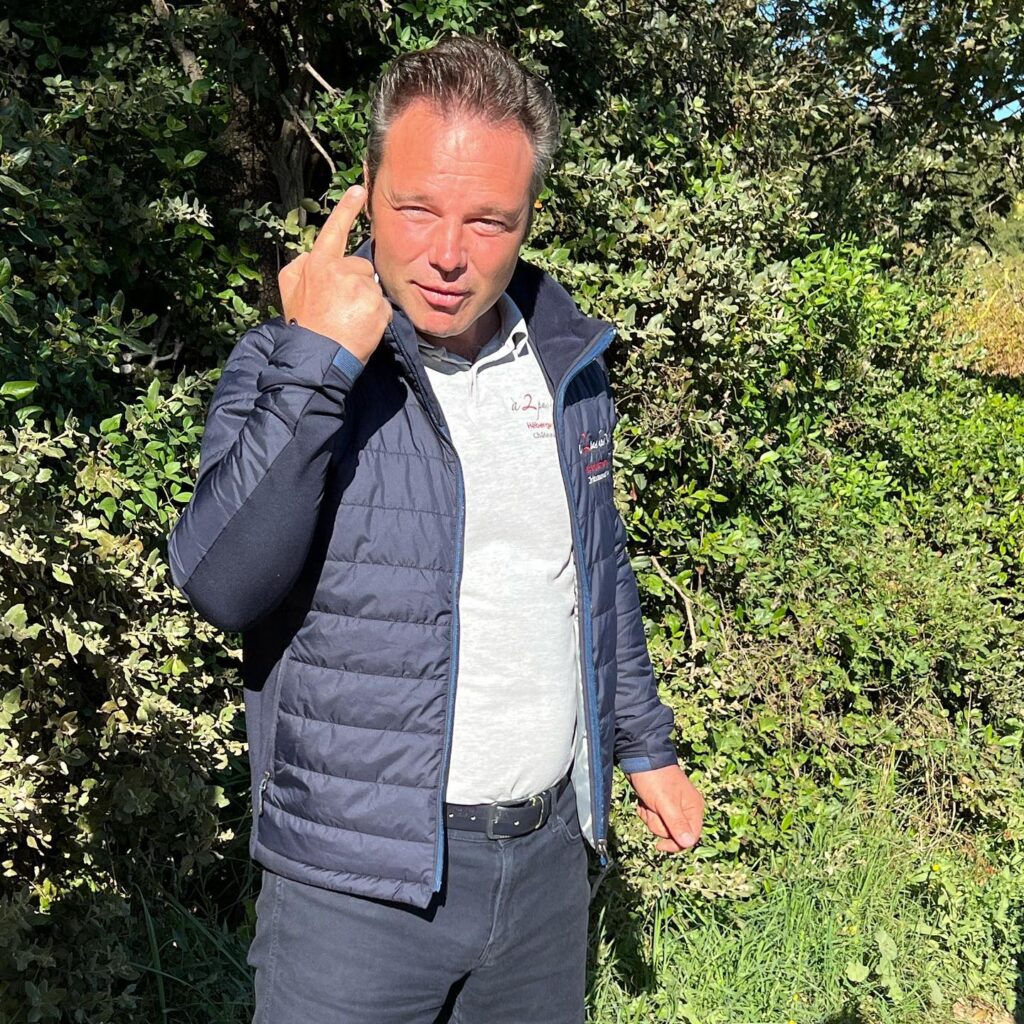
Nicolas from A 2 Pas des Vignes Hebergements and Spa
Instagram: @DomaineLaBarroche @ChateauMontRedon
Websites: https://www.domainelabarroche.com/
https://www.chateaumontredon.com/
Instagram: @a2pasdesvignes
Website: https://sites.google.com/view/a2pasdesvignes

Domaine du Grand Tinel bottle shot
Domaine du Grand Tinel, Domaine Saint Prefert Et Domaine Isabel Ferrando and Vieux Telegraphe
My final installment from my time in Chateauneuf du Pape is a visit and tour at Domaine du Grand Tinel that’s been making wine for 7 generations! (My husband Eddie covered me for another day – see his coverage from Domaine Saint Prefert Et Domaine Isabel Ferrando and Vieux Telegraphe below.)
Lucien Jeune, born in 1904, is known for two things, first he passed a law forbidding UFOs from landing in the vineyards – making the area more appealing to inquisitive tourists – and he was also mayor for 25 years. Grand Tinel began in 1972, combining estates owned by Lucien Jeune and Georges Establet, when their children married in 1968.
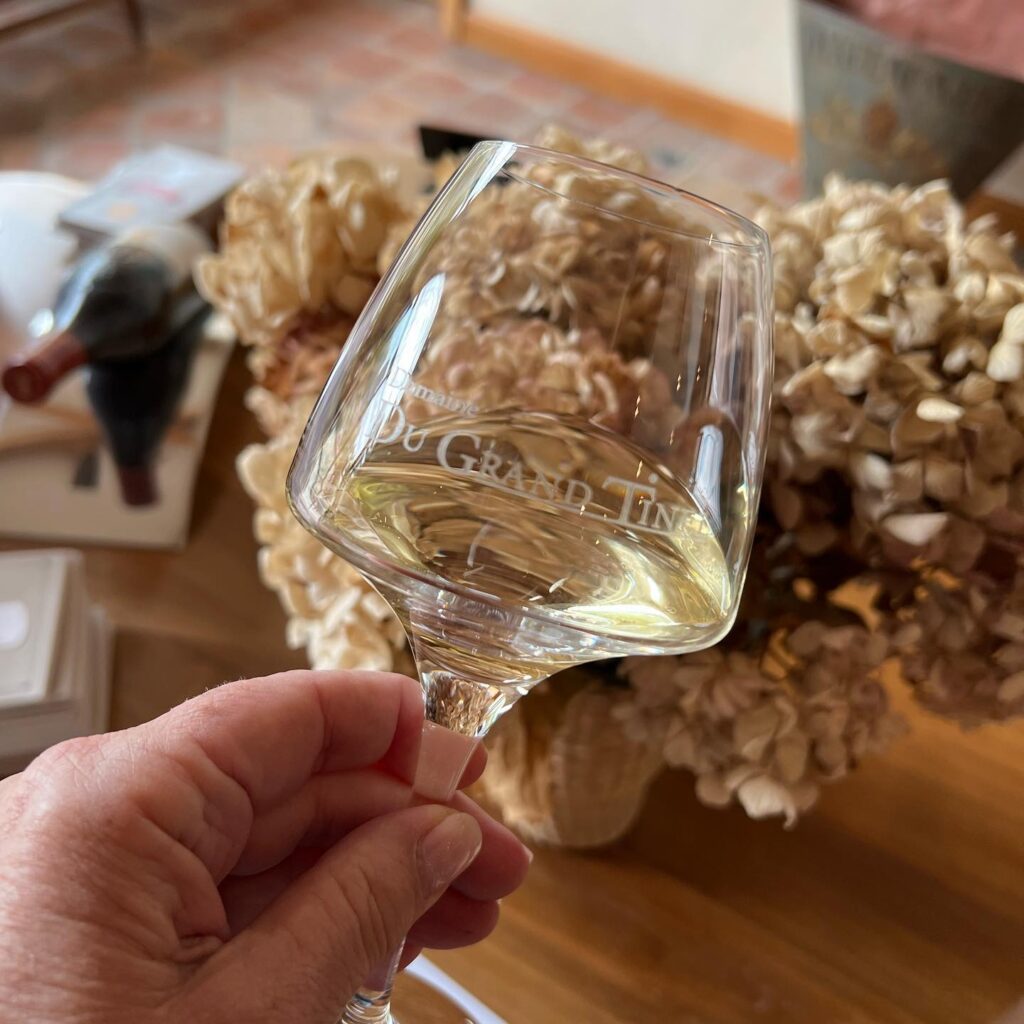
Domaine du Grand Tinel wine glass
To this day harvest is all done by hand, the have two wineries from two different terroirs: Domaine du Grand Tinel and Domaine de Saint Paul. They don’t make all of the white Rhone varieties, and they focus on the three major reds: Grenache, Syrah and Mourvedre. Some of their vines are over 100 years old. They only use new oak barrels for the whites and used for the reds. Wine is sold through Negotiants, mostly to the private sector of French buyers. Bottling and labeling is done in house.
These were my favorites from the tasting: The 2020 Chateauneuf du Pape Blanc, the 2020 Cuvee Cotes du Rhone (Roussanne based), Domaine Saint Paul 2019 Chateauneuf du Pape (Grenache and Syrah based, 70 year old vines), 2018 L’insolite (100% Syrah) and 2006 Chateauneuf du Pape Cuvee Heres (100% Grenache).
Eddie and friends (I was back at the Villa with a cold) visited Domaine Saint Prefert Et Domaine Isabel Ferrando and Vieux Telegraphe…these are his memories of the day:

Eddie’s Telegraph
My day began at Domaine Saint Prefert and with an introduction and discussion with owner Isabel Fernando, and a tasting of the latest vintages. The 2021 Blanc Famille Isabel Fernando Chateauneuf du Pape was a great sample of their wines. The 2020 Colombis from Chateauneuf du Pape was outstanding as well.
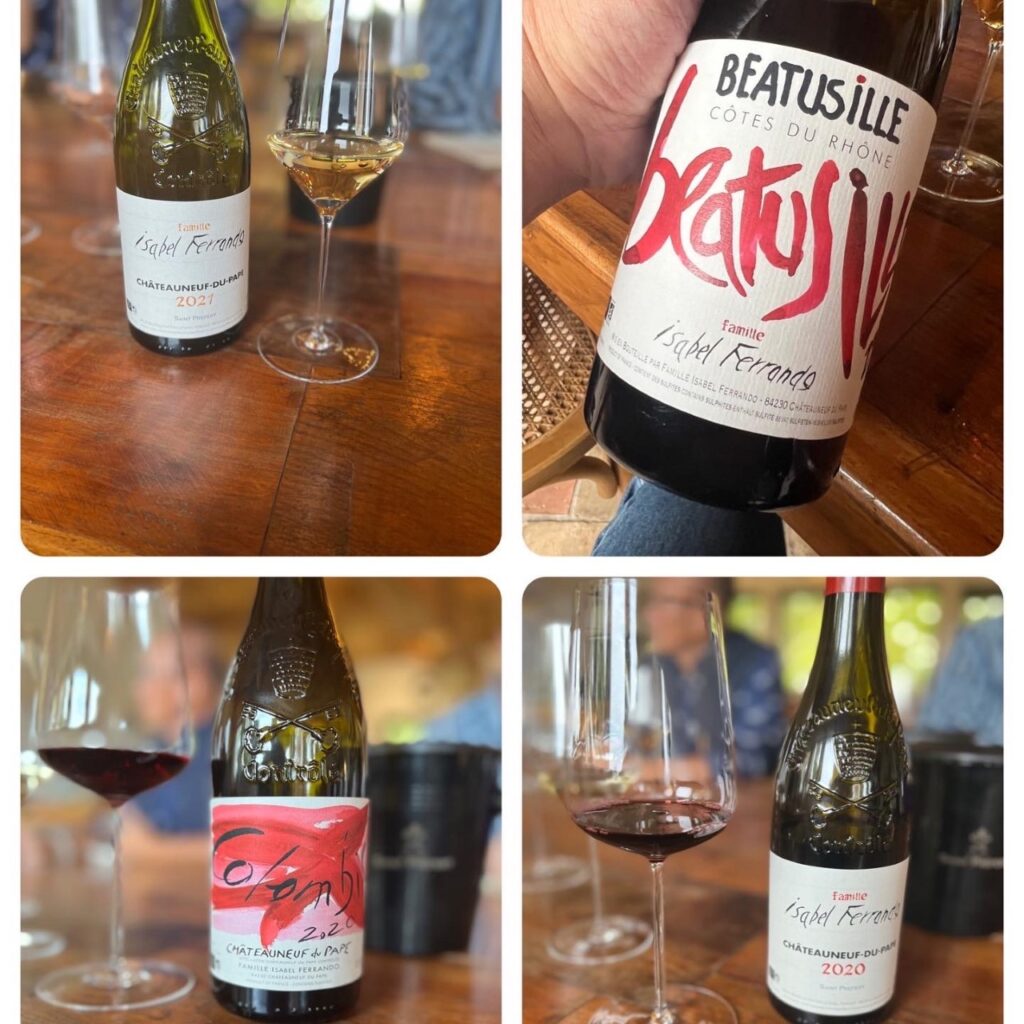
Saint Prefert Isabel Ferrando
The afternoon brought us to Domaine du Vieux Telegraphe. Vieux Telegraphe has been a family run winery since 1891. The sixth generation of the Brunier family is continuing the tradition of making excellent wines. Daniel Brunier gave us a wonderful tour and explanation of their winemaking style. The tour included a walk through their newly constructed caves for wine aging and storage.
The tasting began with Clos Roquete, a very approachable wine made from 33% Roussanne, 33% Clairette, and 34% Grenache Blanc. This wine was so good, we bought a bottle for dinner that night. The 2020 Blanc was outstanding as well. We tasted the entire flight ending with the 2019 Rouge Chateauneuf du Pape made from 65% Grenache Noir, 15% Mourvedre, 15% Syrah, with Cinsault, Clairette and others at 5%. As a special treat, Daniel opened their 2010 rouge Vieux Telegraphe Chateauneuf du Pape. This wine was truly a standout in all the wines tasted on the trip so far. The wine had aged well and still had the ability go age a couple of dozen more years. Many Vieux Telegraphe wines were included in the case we had shipped home.
Instagrams: @DomaineDuGrandTinel @isabelferrando_stprefert @VieuxTelegraphe
Websites: https://www.domainegrandtinel.fr/en/#historique
https://www.vieux-telegraphe.fr/
Eve Bushman has a Level Two Intermediate Certification from the Wine and Spirits Education Trust (WSET), a “certification in the first globally-recognized course” as an American Wine Specialist ® from the North American Sommelier Association (NASA), Level 1 Sake Award from WSET, was the subject of a 60-minute Wine Immersion video (over 16k views), authored “Wine Etiquette for Everyone” and has served as a judge for the Long Beach Grand Cru and the Global Wine Awards. You can email Eve@EveWine101.com to ask a question about wine or spirits.
Post Views: 508


